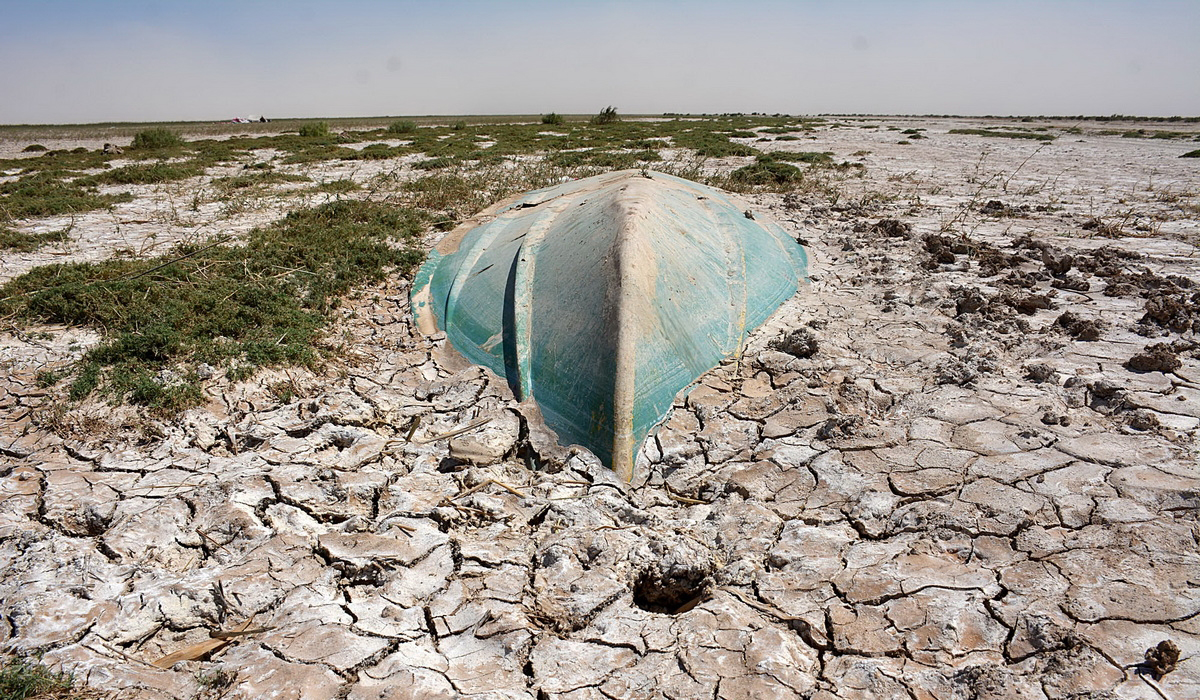The transboundary Hamoun Wetlands on the Iran-Afghanistan border are predominantly fed by Afghan rivers, although the amount of water Iran is legally obliged to let flow into the wetlands is not sufficient to help restore the imperiled lagoons.
Speaking to ILNA, Mohsen Soleimani Rouzbehani, director of the Conservation of Iranian Wetlands Project, said Iran must ensure 60 million cubic meters of water reach the wetlands every year, which is also “so small it can barely be considered water rights”.
He said the wetlands have become more vulnerable since Afghanistan has failed to uphold the Hamouns’ water rights.
“The fact that we’ve done a poor job of managing our own resources in Iran has only compounded the problem,” he said.
“A major section of the lake is dry and there is no water in the area, except for a number of small puddles around Mount Khajeh.”
In an attempt to inject new life into the wetlands, Iran has been implementing a three-phase plan to release a total of 60 million cubic meters of water into the lakes. The first and second phases were implemented in July and August respectively.
But that amount of water is merely a drop in the ocean given the vast expanse of the wetlands (50,700 square kilometers).
Hamouns tend to fluctuate seasonally as it is a mudflat downstream of rivers and water courses that grow in size at times of adequate rainfall and shrink during the warm seasons and the so-called “120-day winds” typical of Sistan-Baluchestan Province.
However, the region’s 15-year struggle with drought has severely impacted the lakes in recent years and a comprehensive, effective plan is required to save the wetlands from desiccation.
“We need to act swiftly both domestically and on the international stage,” Rouzbehani said.
“We have to use diplomatic channels to compel Afghanistan to uphold the Hamouns’ water rights and we need to overhaul our water policies.”
The Hamouns are a series of shallow marsh lakes in southwest Afghanistan and southeast Iran, constituting three lakes: Hamoun-e Helmand, which is entirely in Iran; Hamoun-e Sabari on the border; and Hamoun-e Puzak, which is almost entirely inside Afghanistan.
The three lakes are linked and fed by water from Afghanistan’s Helmand River.
Hamouns are one of the major domestic sources of dust and sandstorms in southeastern Iran, battering major cities such as Zahedan and Zabol. The latter was ranked by World Health Organization as the most polluted city in the world (based on PM2.5 concentration) earlier this year.
The construction of dams and canals in Afghanistan has led to water being drawn for agriculture in the Afghan provinces of Kandahar, Helmand and Nimrooz, causing water levels in the lakes to plummet.
To make matters worse, four reservoirs were built within Iran, diverting more water and speeding up the desiccation of the wetlands.


